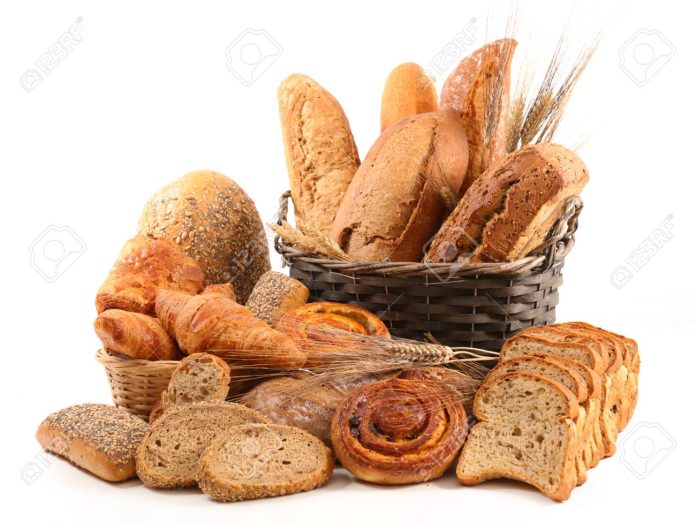In Eurpoe, generally, bread is an integral part of the meal. Interestingly, some of these breads have fascinating histories about them as you’ll see in this article.
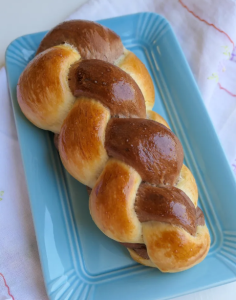
Braided bread [Swiss Zopf]
Said to have been around since at least 1430, this bread is unique to Switzerland and it is intricately braided. The slightly sweet Zopf is made from white flour, milk, eggs, butter, and yeast; and is a favorite among the Swiss for Sunday morning breakfast.
According to legends, women went from being buried with their husbands in ancient times to cutting off a braid of their hair to throw on the grave, to later still, baking a loaf of bread to be buried as a substitute.
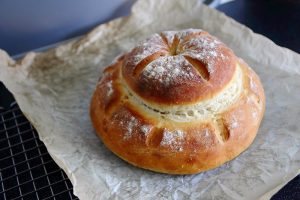 Cottage loaf
Cottage loaf
Native to England, most bakers agree that baking cottage loaf was probably a space-saving effort in old-fashioned bread ovens, even though the cottage loaf didn’t appear by name in writing until the mid 19th century, according to afar.com.
Because of the difficulty of making it (and perhaps selling it, as it’s not exactly a shape that lends itself to slicing for sandwiches), the bread isn’t as easy to spot in bakeries as it once was.
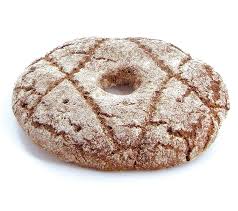 Ruisreikäleipä [aka, Finnish hole bread]
Ruisreikäleipä [aka, Finnish hole bread]
Native to Finland, this mildly bitter rye and oat loaf has a small hole in the middle that might catch you by surprise. But afar.com states that there’s a practical purpose behind its shape.
After the Ruisreikäleipä dough rises the first time, the hole is punched through so the baked loaves can be threaded onto long poles hung across the kitchen ceiling to air dry and keep the bread safe from pests and dry during the long, cold winter.
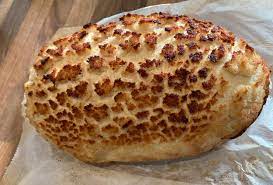 Tijgerbrood [Tiger bread]
Tijgerbrood [Tiger bread]
Tiger bread is a soft white bread with a cracked crunchy crust made from a coating of sesame oil and rice flour on top.
Sold commercially in the Netherlands since the 1970s, Dutch “tiger bread” is speculated to have its roots in the beginning of the country’s trade with Southeast Asia.
Sold as “Dutch crunch” in some areas of the United States, more recently the bread was rebaptized “giraffe bread” in the United Kingdom after a little girl complained to large supermarket chain Sainsbury’s that the splotchy crust looked more like a giraffe’s coat than a tiger’s.
 Pan gallego
Pan gallego
According to gourmet history, this bread was first baked in the Spanish region of Galicia; and it was said to be one of the foodstuffs locals gave to pilgrims traveling St. James’s Way to keep them from going hungry on the long journey to Santiago de Compostela.
“It’s an ideal choice for people on a long trip,” says afar.com.
“The 500-year-old recipe for Galician bread produces loaves that stay fresh for up to a month because of their slow fermentation and lower salt content.” the website states.
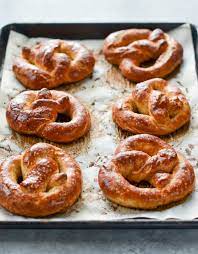 Pretzels
Pretzels
The original pretzel, called brezel in German, is thought to have been invented by monks in the Middle Ages, possibly as a prize for children for learning their prayers.
But the German story is a juicier tale of imprisoned bakers who came up with the unconventional shape before they were set free.
And perhaps that’s why the twisty strip of lye-treated dough has been the bakers’ emblem since the 12th century in southern Germany.
Pretzels are made with bread and water (no eggs or dairy) and so are an acceptable snack during Lent.
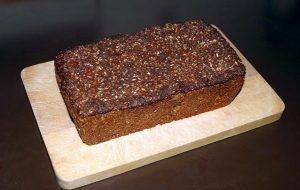 Hverabrauð [Thunder bread]
Hverabrauð [Thunder bread]
The rye loaf is cooked for 24 hours in the steam from a geyser. The bread, called hverabrauð or rúgbrauð, is virtually crustless and moist with a very dense, dark crumb.
While many locals opt for baking their rye bread in an oven these days, before the advent of ovens and cooktops, burying a box of bread dough by a hot spring or a geyser was the easy option.
But beware of the quantity you eat, as the Icelandic staple is rumored to make people gassy and even has a nickname to match—brumari, Icelandic for thunder bread.
“Today, this bread made the old-fashioned way is hard to find. For bread piping hot from the ground, head to Laugarvatn Fontana for a tasting and a tour of its geothermal bakery,” afar.com counsels.
 Focaccia
Focaccia
While thought to have evolved from an ancient Etruscan (prior to the Roman Empire) flatbread, focaccia is most similar to traditional recipes from Liguria, in northwestern Italy.
The bread is simple, seasoned with olive oil and salt, and sometimes herbs, onion, or cheese is added.
Traditional recipes for this quick bread involve slicing knives through any bubbles that may arise, and poking further wells into the dough in a process called dotting to help the bread soak up the oil used to keep it moist.
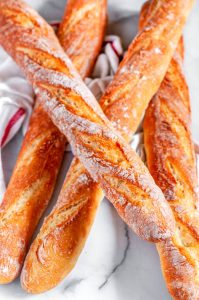 Baguette
Baguette
Baguette is the French word for wand or stick; and long loaves of crusty wheat bread have been typical in France since the era of Louis XIV.
The modern long-skinny variation is thought to have become popular because of a 1920 law forbidding bakers working between the hours of 10 p.m. and 4 a.m. With less time to prepare the bread before the morning rush, slender loaves were the best choice for a faster bake.
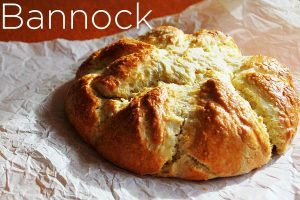 Bannock
Bannock
Native to Scotland, historically, these loaves were heavy and unleavened, made of barley or oatmeal, and cooked over a stone griddle in a fire.
They were also used in rituals to celebrate the changing of the seasons and may have even played a part in the deciding of potential victims’ fates during human sacrifices during the late Iron Age.
Fortunately for everyone, ritual human sacrifice is no longer widespread in Scotland, and current versions of the much more palatable bread use baking powder or soda to lighten it up.

